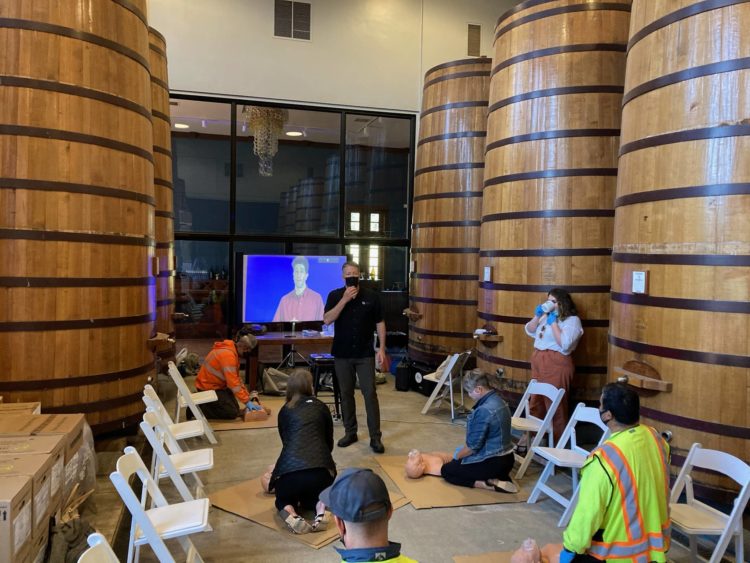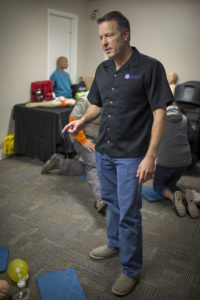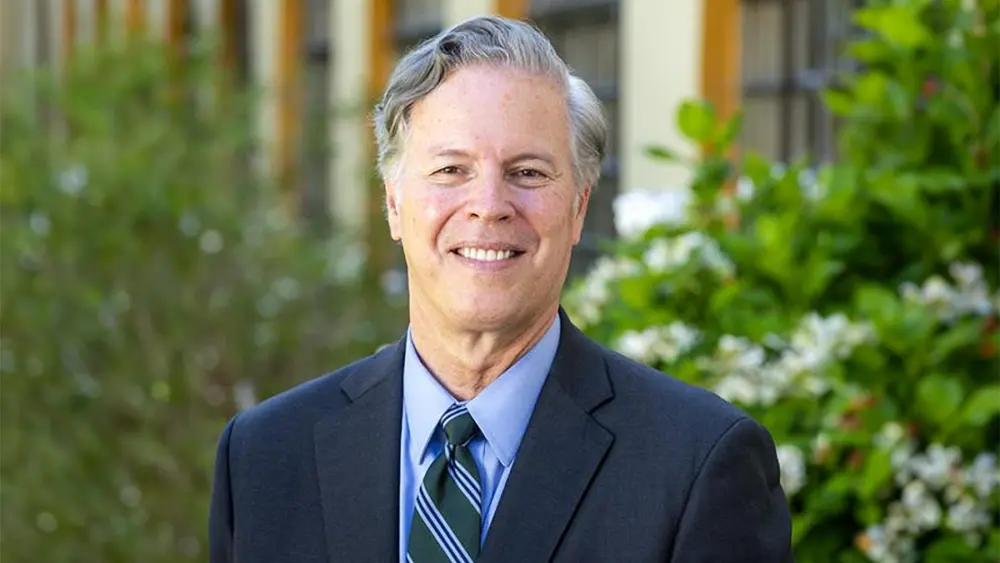
Eric Thomson, CEO of Survival CPR & First Aid, conducts a training session.
On a warm spring day at Viansa Sonoma Winery, a tourist was sitting outside, enjoying the panoramic views of Sonoma Valley’s rolling green hills and blue skies when he suddenly collapsed on the ground.
The man was experiencing cardiac arrest, which is when the heart suddenly stops beating. Bystanders and employees began CPR, while other staff located the winery’s automated external defibrillator (AED). The device gave two good shocks to the man and indicated for the bystanders to continue to perform CPR. The winery staff was able to bring the patient back into a pumping heart rhythm and he regained consciousness before the fire department and ambulance arrived to take him to the hospital.
Eric Thomson, CEO of Survival CPR & First Aid, spent 30 years as a law enforcement officer and emergency medical technician before founding his emergency response training company. “I arrived in helicopters, boats and patrol cars to every imaginable type of event,” he says. “There were plenty of examples in which trained and equipped bystanders made a positive impact on victims. In both my personal and professional life, I also could share several stories where the outcome was tragic, simply because people at the scene of the emergency did not have the proper equipment, did not know how to use the equipment they had, or simply did not know what to do.”

This could have been the case with the patient at Viansa Sonoma Winery, had the winery not enrolled in Survival CPR & First Aid’s AED Compliance Program, which ensures equipment readiness and provides civil immunity. The winery staff was also reminded of the AED’s location in a safety briefing just two weeks earlier. According to a study conducted by the American Heart Association (AHA), more than 55% of employees surveyed report that their employers do not offer CPR/AED training and more than 51% of employees do not know where their workplace’s AED is located. Yet, knowing how to use an AED is essential to saving a life. “We’ve learned that we must deliver a shock within 3 minutes of a person collapsing,” says Thomson. “No fire department can get there that quick. So, without AED awareness, people die.”
When businesses refuse to have emergency equipment training, it is a wasted opportunity to potentially save a life, says Thomson. This decision is often due to a false fear of liability, or the assumption that nothing would ever occur on their watch at their workplace. However, cardiac arrest is more common than one may think. According to the AHA, “In the United States, more than 500,000 children and adults experience a cardiac arrest [each year], and less than 15% survive. This establishes cardiac arrest as one of the most lethal public health problems in the United States, claiming more lives than colorectal cancer, breast cancer, prostate cancer, influenza, pneumonia, auto accidents, HIV, firearms, and house fires combined.”
Survival CPR & First Aid’s most popular course for businesses is “CPR & First Aid,” where students learn proper CPR and how to use an AED, which is the most important life-saving device when someone is struck with sudden cardiac arrest.
“There is no greater reward than actually helping save a life,” Thomson says. “We’ve had students report that they saved a family member who was choking, performed CPR and used an AED to save a life, and assisted at other types of accidents. We’ve had students apply tourniquets to severely bleeding accident victims, treat patients for shock (which is very deadly when not treated), and care for victims having seizures and diabetic emergencies.”
Thomson’s hope is that more businesses will recognize the severity of cardiac arrest and the need for emergency response training in the workplace. “We provide a benefit that employers can be proud of–one their employees and the community will be aware of and thankful for,” he says. “It is great for any business, ours included, to be part of something bigger than one’s self.”
Did You Know?
In a study conducted by the American Heart Association, more than 65% of employees surveyed say that they would view their employers more positively if they offered CPR/AED or First Aid training. At the same time, more than 80% believe that offering this training is simply the right thing to do.
Source: American Heart Association
[Photos courtesy of Survival CPR & First Aid]
Author
-

Summer Young moved to Sonoma County in 2018 to attend college and fell in love with the area. She's passionate about promoting all that the region has to offer through her work in local business marketing and journalism. When she's not writing, she can be found drinking coffee and exploring new places with her husband.
View all posts



